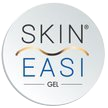DO NOT STRESS OVER THE STRETCH
Stretch marks or Striae or Striae Atrophica are scars or indented streaks that occur when the skin’s connective tissue gets stretched due to sudden growth or weight gain. Stretch marks occur because stress is applied to the skin past the point it can handle. They usually make an appearance on the abdomen, breasts, hips, upper arms, buttocks, thighs, or other places on the body.
Stretch marks aren’t painful or harmful and do not ever pose a threat but can at most times cause issues with self-image and anxiety. Stretch marks do not require treatment and often fade over time, with or without treatment. There are very few chances of them disappearing completely.
THE CAUSES
The occurrence of stretch marks is more likely if you are –
- Pregnant – The majority of women experience stretch marks during (in the last trimester) or after birth.
- Losing or gaining weight – Gaining loads of weight in a short period.
- Going through puberty – Rapid growth in the body is quite common in young people going through puberty, which can cause stretch marks.
- Undergoing Breast enlargement surgery – It is very rare to develop stretch marks when you opt for normal-sized implants, but the chances of developing stretch marks are higher in the case of large-sized breast augmentation surgeries.
Using steroids – Collagen present in the skin strengthens and supports it, and a reduced amount can increase the risk of stretch marks. Prolonged use of certain steroid-based creams, lotions, or tablets can decrease the level of collagen in the skin.
PREVENTION IS BETTER THAN CURE
Stretch mark prevention isn’t always possible. However, there are a few things mentioned below that can reduce the risk –

- Avoid binge eating and maintain a healthy weight.
- Slow and gradual weight gain during pregnancy should be the aim.
- Eat a healthy, balanced, and nutrient-rich diet. Eat unprocessed foods in various colors to get in a variety of nutrients into your body.
- Drinking enough water helps your skin stay hydrated and soft. Dry skin is more prone to stretch marks than soft skin.
- Sun exposure can break down skin’s collagen fibers making the skin more at risk of getting stretch marks. Using good sunscreen doesn’t prevent the occurrence of stretch marks but can considerably improve the skin’s overall health and appearance.
- Including Vitamin-C-rich food that helps in the production of collagen, which plays an important role in keeping your skin strong and elastic.
- Zinc helps reduce inflammation and helps in fastening the wound healing process. Zinc-rich foods such as nuts and fish may help in keeping your skin healthy.
TREATING IT RIGHT
Stretch marks are permanent, but few treatments may help in alleviating the itch and could make them less noticeable. Some over-the-counter and doctor-prescribed creams, oils, and topical skin rash products claim to prevent or reduce the appearance of white stretch marks but they may not be able to completely remove them. Some creams may trigger an allergic reaction, so it’s best to try them post consultation with your doctor.

The most important thing to understand is that no single treatment/product works for all and many products or treatments don’t seem to work at all. Some handful of applications or home remedies that you can try are -
-
Cocoa butter, almond oil, and olive oil are also ingredients claimed to reduce stretch marks.
-
Exfoliate – Regular exfoliation helps in treating white stretch marks. Exfoliating regularly helps in removing dead skin from the area and allows other external skin treatments to penetrate more deeply and work faster.
-
Pure Aloe Vera is a natural healing agent and a skin softener, thereby making it an ideal home remedy for stretch marks when applied daily post-shower.
-
Virgin coconut oil is proven to possess healing properties and applying it to stretch marks might reduce their red appearance. Don’t use coconut oil on the skin if you are allergic to it.
- Laser therapy, Microdermabrasion (exfoliating the skin clinically), and needling (collagen is injected underneath the top layer of skin) are other forms of clinical treatment for stretch marks.
TAKEAWAY
The best treatment to avoid the appearance of stretch marks is prevention. Keeping your skin hydrated helps in maintaining the elasticity that is required to keep your skin from scarring.
Stretch marks don’t stay as prominent as they initially appear, and almost all stretch marks fade over time, even without treatment. Fortunately, they won't stay forever, so just RELAX and try to wear them with pride
STRETCH MARKS DO NOT CAUSE ANY MEDICAL HARM!





